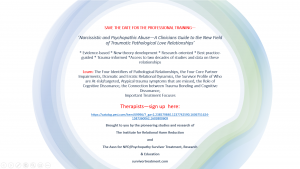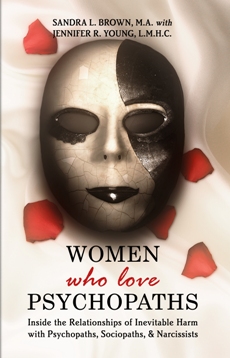By Joan-Marie Lartin, PhD, RN
Imbalances in neurotransmitters are related to many symptoms of PTSD: anxiety, obsessions, irritability and rage responses; cravings for carbohydrates, alcohol, and other compulsions (shopping, gambling, and sex, for example); insomnia, panic attacks and depression.
Post- Traumatic Stress Disorder or, as it sometimes feels, Ongoing Stress Disorder, affects us spiritually, emotionally, cognitively, physically and behaviorally. Of course, since we are whole persons, these aspects overlap to some degree.
Fortunately, recent advances in brain science have created options for helping to heal trauma that are safe, noninvasive, natural and very effective. As a therapist with over 35 years’ experience in general, and with over 20 years’ experience helping traumatized people of all ages, I have found amino acid therapy and neurofeedback training to be powerful tools in healing from trauma.
I have had my own experiences with trauma—the suicide of a family member, marital infidelity and a number of relationships with disordered men. PTSD is not an academic subject for me, and my experiences have shaped my approach to clients who come to me for help with problems related to emotional trauma.
One of the most useful ways I have found of thinking about emotional trauma is that it is a serious threat, or ongoing threat, to well-being that overwhelms a person’s ability to cope. Coping mechanisms just can’t do the trick, and so the person’s behavior and emotional, cognitive, and physical states show evidence of being overwhelmed.
The symptoms of PTSD, even though they are serious and even debilitating, are just that—
symptoms that something is very wrong. It is of course crucial to provide relief for the symptoms such as insomnia, overeating, panic attacks, and depression. It is also crucial to place these symptoms in a larger context so the cause(s) of the problem—being overwhelmed by a Pathological Love Relationship, for example—can also be addressed and changed.
One of the most far-reaching innovations in treating PTSD that I have seen is supplementation with amino acids and related substances. Since PTSD disrupts these fundamental physiological processes, it makes sense to provide a person with PTSD symptoms with these building blocks so her body can recover, and in doing so, reduce or eliminate some of the symptoms that are directly or indirectly related to neurotransmitter imbalances created by being chronically overwhelmed.
In PTSD, the person is physiologically overwhelmed, especially in the nervous system, and often moves into overdrive and then sometimes exhaustion. The stress response—fight, flight, or freeze—can also go into overdrive and become a permanent, rather than a temporary, situation. This makes it particularly difficult to calm the nervous system—it is as though the stress response has taken on a life of its own and is in overdrive.
It’s no wonder traumatized people self-medicate with food, drugs (prescription and street), alcohol, nicotine, caffeine, shopping, and the like. The anxiety level seems to be set on ‘high’ all the time, whether there is an external threat or not. For partners or former partners of disordered persons, of course the stress is often ongoing and severe, making it exceedingly difficult, and perhaps risky, for the person’s physiology to lower the threat response.
But the threat response, the fight/flight/freeze, has its upsides as well as its downsides. From a positive perspective, this response ensures that the person will react quickly to threats to safety and well-being. He or she may also overreact to situations that are not really threatening. But if this response is calmed down and essentially ‘reset’ it will be there when needed. Being on red alert—hypervigilant—is not really healthy. We are not wired to be in overdrive all the time, and when this occurs, the toll is high.
For example, neurotransmitters are chemical messengers which ensure that the person responds to and recovers from all kinds of situations. There are fundamentally two kinds—excitatory, which help us get going, and inhibitory, which help us to calm down. Prolonged stress related to emotional trauma triggers the constant release of both kinds.
Over time, the body cannot sustain this and it becomes depleted and out of balance. Serotonin is one of the key inhibitory neurotransmitters, and it is almost always very low in traumatized individuals. Traditional antidepressants may recycle what little there is but do not help the person to produce any more.
Reduced serotonin levels can lead to insomnia, irritability, headaches, carbohydrate cravings and depression. High levels of excitatory neurotransmitters can lead to increased anxiety (as if there weren’t enough to begin with!) and insomnia.
So we can see how it is that PTSD leads to physical overdrive, which leads to many problems, neurotransmitter imbalances being an important example. The good news is that it is now possible to measure many of the key neurotransmitter levels, directly and indirectly. However, neurotransmitter testing is now often covered by many health insurance companies, and the very specific amino acids that are suggested are usually easily available.
Just as a woman who is having heavy periods may take iron tablets for a time until the cause of the excessive bleeding is determined, so we can take supplements that will help balance our neurotransmitters. Most of these supplements are amino acids—naturally occurring substances that the body uses as building blocks for most neurotransmitters.
While there is currently some controversy about this in the traditional medical community, it may well be related to the recent nature of these discoveries as well as the limitations and blind spots of the existing medical paradigms. Time will tell.
Another naturally occurring substance in our bodies is cortisol, which is produced by the adrenal glands in response to the fight/flight/freeze response. A discussion of cortisol imbalances will be presented in a forthcoming column; suffice it to say that if a cortisol imbalance exists and is not corrected, just as is true for neurotransmitter imbalances, recovery from emotional trauma will take much longer to occur.
In my practice, I combine neurotransmitter testing with psychotherapy as well as neurofeedback training. Using the amino acid supplements alone, which I am frequently asked to do outside of the client-therapist relationship, is not advisable for many reasons.
For starters, these supplements are not a magic bullet and the use of them alone can reinforce the belief among Americans that if we just take the right pill, everything will be OK. As Sandra L. Brown’s research and clinical work have demonstrated, there are many, many other aspects of healing from life with a disordered person and the predicable emotional trauma that is a part of the picture.
But the very good news is that amino acid supplements, after a specific test or tests to determine if and where imbalances lie, as well as neurofeedback training in conjunction with psychotherapy and other modalities such as yoga, massage, EMDR, offer a very gentle and extremely effective path for getting your life back on track. What a blessing.
(**If we can support you in your recovery process, please let us know. The Institute is the largest provider of recovery-based services for survivors of pathological love relationships. Information about pathological love relationships is in our award-winning book, Women Who Love Psychopaths, and is also available in our retreats, 1:1s, or phone sessions. See the website for more information.)
© www.saferelationshipsmagazine.com






